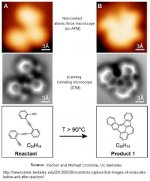I did some checking into the LAME encoder. The way I used it is about as good as it gets.
One should expect some differences with the FLAC, you can't throw away info and get the same files.
I now have a set of new test leads and 2x6 feet of plastic tubing that will serve as the "wire". I'll try them filled with water, wine and beer. Look for the files tomorrow.
One should expect some differences with the FLAC, you can't throw away info and get the same files.
I now have a set of new test leads and 2x6 feet of plastic tubing that will serve as the "wire". I'll try them filled with water, wine and beer. Look for the files tomorrow.
Good point on the 2nd bit - yes, worth trying a few variations there ... but, you can go nuts about it, trying the n'th permutation to get the best subjective version -- and in the end is it worth it, a FLAC is only going to be roughly double the size anyway ... ?Frank, wrt the nulling I think you would have to mp3 encode the exact same flacs to get a reliable result. can you be 100% sure that when you cut down the mp3 that you have it starting at the exact same sample as the flac? any tiny difference in start time will affect the result.
I think pano said they were 320kb you could try converting with default options and see the result. would also be interesting to see the difference between different encoders, which are set to the same settings!
Tony.
With regards to nulling, this does get tricky for the very reason you mention - with mp3, it's usually fairly easy to down to the precise, matching sample; when I did this at one point I deleted 149 samples to get matching ... no, 1 sample out ... OK, undo, delete 150 samples ... spot on ... . There's subtleties in the levels as well, I tried adjusting one version by 0.1, 0.2, then 0.15dB - this slightly improved the maximum peak diff, but the average diff got worse ...
Fun and games start when an analogue stage is gone through, then it's almost guaranteed that there won't be a 'right' sample to synch on. So, then you have to upsample, up and up and up, which interpolates samples, to finally get a decent match; I've gone right up to 2.8MHz in some experiments -- you get very analogue looking 20kHz sine waves then!
And clock wobble and drift can intrude; trying to compare digitised vinyl samples, even from a premium TT, is a nighmare: the wow factor
Edit: the diff file I showed, when played, is recognisable as about half being the music but the rest weird chuffing, spitting, hissing and gurgling noises.
Last edited:
It has turned out to be harder than I thought to get these little PVC tubes filled with liquid and no air bubbles. Will work more with that today. The I.D. of the tube is 1/8" (8mm2)
Also found that tap water here has a very high impedance. Just 2 probes stuck in a cup of water reads 12.5 Meg. Thru a 6 foot tube, it more of an insulator than a conductor. Will have to use salt water instead.
Also found that tap water here has a very high impedance. Just 2 probes stuck in a cup of water reads 12.5 Meg. Thru a 6 foot tube, it more of an insulator than a conductor. Will have to use salt water instead.
It has turned out to be harder than I thought to get these little PVC tubes filled with liquid and no air bubbles. Will work more with that today. The I.D. of the tube is 1/8" (8mm2)
Hang them so they form a U open on both ends. Fill from one end, let it overflow from both ends. Tap them so bubbles raise toward open ends (more time required with beer)
Note. When conducting tests, have the tubes lay over, so that they have same form and the distance from ground is identical.
George
Use Coke. The sugar-free will be easier to clean up.
I wouldn't even use the sugar-free for an experiment like this. Don't see how people can drink that stuff.
se
But hurry to make your recordings, before the probes get eaten up!Use Coke. The sugar-free will be easier to clean up. Conductivity is very good because of all the acidity.
i have to say pano, between this and the real wattage used fourm, you realy get the hamster running on the weel in my brain.
you are taking on some audiophile "knowns" and letting the facts come out.
very mythbusters of you. and having fun too.
hats off to you. i like it.
you are taking on some audiophile "knowns" and letting the facts come out.
very mythbusters of you. and having fun too.
hats off to you. i like it.
Thicker tubes will be easier to clear of bubbles ...
Ya, steel wool--just think of that rat's nest of voltage junctions!!!
Yup! Strand-jumping city!
- Status
- This old topic is closed. If you want to reopen this topic, contact a moderator using the "Report Post" button.
- Home
- General Interest
- Everything Else
- Fancy Interconnects? How about a potato, or even mud?

